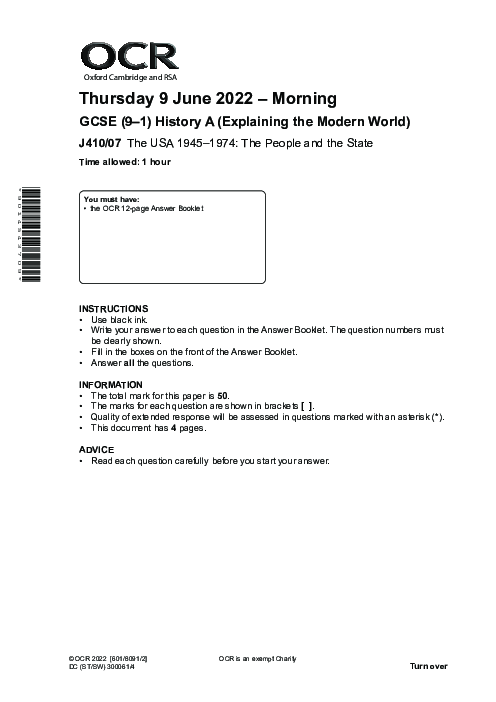History (A) J410,07 June 2022
Laura Bellini
1. Women’s Movement (1964–1975) – Description of one key action, such as the passing of the Equal Pay Act (1963), the establishment of the National Organization for Women (NOW), or protests for reproductive rights.
2. Supreme Court and Civil Rights (1950s–1960s) – Examination of landmark cases including Brown v. Board of Education (1954), Loving v. Virginia (1967), and Miranda v. Arizona (1966), assessing their role in advancing civil rights.
3. Impact of the Red Scare (1945–1954) – Analysis of effects such as McCarthyism, blacklisting, loyalty oaths, and its influence on American politics and society.
4. Civil Rights Sources Analysis – Interpretation of a 1956 political cartoon’s context and purpose; evaluation of the Montgomery Improvement Association’s guidelines for integrated bus seating in understanding the nonviolent civil rights movement.
5. Black Power (1964–1974) – Debate on whether Black Power harmed or helped the civil rights struggle, comparing militant approaches (e.g., Black Panthers) with nonviolent activism (e.g., Martin Luther King Jr.).
See More Paper 7 9 months ago
History A (J410) Subject directory
All resources in one place
Related Past Papers
Related Tutorials
Crash report
